Bolognese sauce has got to be the most decadent of a tomato meat sauce. But don't worry, it's not as hard to make as you might think. Not only is this Bolognese sauce recipe thick and tasty, but it is also Whole30 compliant. This sauce is the perfect compliment to top a spaghetti squash or as a filling to zucchini boats or stuffed peppers.
If you are on Whole30, keep reading or skip down to the recipe where I tell you what I substitute red wine with to make this sauce Whole30 compliant.
But you don’t have to be on the Whole30 to make this Bolognese sauce, make it any time to top your favorite bowl of pasta, squash or anything else.
If you are interested in Whole30 and want more information, visit the official Whole30 website.
Jump to:
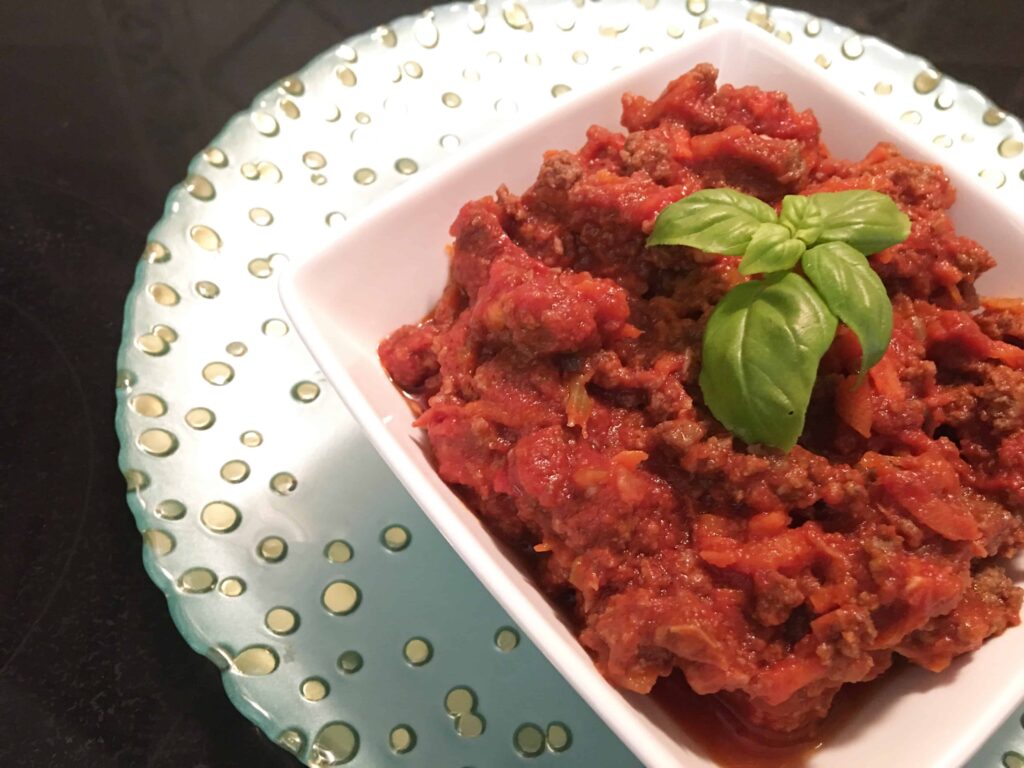
tips and tricks
Unlike a traditional Bolognese sauce recipe this sauce recipe replaces the red wine with apple cider vinegar. And, as you guessed, you can’t tell the difference. You won’t even miss the red wine, I promise.
I've found that I can easily replace wine with apple cider vinegar in any of the recipes I have made so far and you can't tell. It's amazing!
simmering the sauce is the trick!
With any sauce you start off by simmering the onions, carrots and celery until softened and translucent. Once you have added the beef and the tomato puree bring it to a simmer. And, just like a traditional Bolognese sauce, you will need to simmer the sauce until it's thick. The more it simmers, the more the vegetables break down into the sauce releasing a burst of tangy sweetness.
Simmer this sauce at a low heat letting the steam escape by wedging a wooden spoon between the pot and lid of the pot. This will help the sauce get thick and sweet.
This Bolognese sauce makes the perfect accompaniment to a spaghetti squash. If your not on Whole30, you can use this as a pasta sauce to top spaghetti or to top gnocchi.
You can also use the Bolognese sauce as part of a stuffing, you'll just need to add an egg and a couple of spoons of almond flour to bind the ingredients. Stuff peppers, eggplant or make zucchini boats with this Bolognese filling.
how to cook a spaghetti squash
If you've never made spaghetti squash, it's really simple. Just cut open a spaghetti squash by cutting it with a sharp knife lengthwise. Open up the squash and scoop out the seeds and extra fibers. Discard them.
Preheat the oven to 350°F. Place the spaghetti squash face down on a baking sheet lined with aluminum foil. Place the squash in the oven and then pour about one cup of water on the baking sheet ensuring that the water is evenly distributed around both halves of the squash.
keep it simple
Some recipes for bolognese sauce call for milk, tomato paste and broth. If you want to add the broth, you can. I don't add broth so you won't find it in my ingredient list. If you do use broth, you'll want to make sure that you simmer the sauce until it's thick.
As far as the milk and tomato paste, it's really not a necessity. And if your on a round of Whole30, its not allowed unless you use coconut or almond milk. Some bloggers swear by milk added to a bolognese sauce, making it more decadent. But, frankly I've never used milk for a tomato sauce. And regarding tomato paste, if I was using very watery tomato puree then I would use tomato paste to thicken.
Some cases where you might need to use tomato paste are if you are using homemade tomato puree. Homemade tomato puree tends to be a lot more watery than store bought.
When you use pureed tomato that's thick, you won't need the tomato paste. It's not a must. Even when you make a regular meat sauce, it's not necessary because the fat from the beef thickens the sauce up automatically.
herbs - fresh or dried?
It's always nice to use fresh herbs. And while I advocate the use of fresh herbs, they are only accessible to me from my garden for the summer months. In Canada, that's a whopping 2 months. I endeavor to buy them when I want to splurge on fresh. But, honestly, there are some herbs that I don't mind dried. Like basil.
I love the taste of dried basil. It does take on a slightly different taste than fresh basil - but I like it. I use dried basil a lot to substitute for fresh basil. So if you don't have fresh, feel free to use dried basil.
Basil will be the last herb I add to my sauce, once I've taken it off the stove top. I don't actually cook the basil and you shouldn't either as cooked basil brings on a totally different taste.
cooking time and storage
Traditionally Bolognese sauce is supposed to be super thick. But, it doesn't have to be. Just adjust the cooking time to customize the thickness of the sauce. The more it cooks the richer the taste.
And finally, if you find that you've made a tad bit too much sauce, scoop up heated sauce (boiling hot) into a maison jar. Place the lid on and screw the top down until sealed.
Let the jar stand on the counter, as it cools down the contents will create a vacuum and seal itself. The top will "pop" once it's full sealed. Place the sauce in the fridge and store for up to a month.
If you don't have a maison jar, don't worry, just store extra sauce in a microwave safe container (once cooled) and store in fridge for up to 4 days or in the freezer for 1 month.
make this recipe for bolognese sauce now or pin it for later:
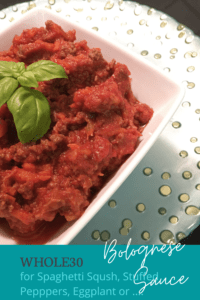
Recipe Details
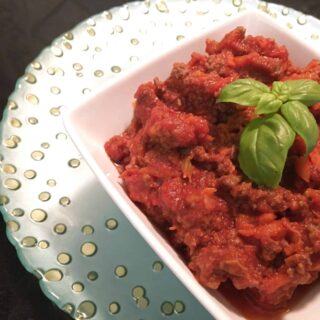
Bolognese Sauce (Whole30)
Ingredients
- 1 spaghetti squash if you are making a spaghetti squash and topping the sauce over it
- 1 cups water
- 1 tbsp ghee
- 1 tbsp olive oil
- 550 g extra lean ground beef
- ½ cups shredded carrots
- 1 celery stalk cubed
- ½ cups apple cider vinegar
- 1 medium white onion chopped
- 3 fresh basil leaves or 1 tsp dried basil
- 2 tsp salt
- 1 tsp nutmeg
- 750 ml tomato puree
- pepper to taste
Instructions
- Roasting the Spaghetti Squash
- Preheat oven to 350° F. Cut spaghetti squash lengthwise and scoop out seeds and extra fibres. Lay open side down on a baking sheet lined with aluminum foil and place in oven. Carefully place 1 cup of water on baking sheet ensuring that water is evenly dispersed around squash.
- Bake squash for about 40 minutes or until a fork inserted in squash comes out easily. While squash is roasting begin to make sauce. Once the squash is ready remove from oven and using a fork, scrape out the squash and place in a bowl. Cover with foil to keep warm.
- Bolognese Sauce
- Sautee onion, celery and carrots in ghee and olive oil. Once vegetables are translucent add the ground beef and the salt, pepper and nutmeg. Cook ground beef mixture until cooked. Add apple cider vinegar and allow to cook down until most of the liquid is evaporated.
- Add tomato puree, mix and bring to a boil. Turn down the heat and simmer and low heat for at least 30 to 40 minutes. For a thick sauce, wedge a wooden spoon between the top of the pot and the lid of the pot, allowing the steam to escape. This will allow for a thick sauce.
- After about 30 minutes the sauce should be cooked. Taste to determine if any more salt is needed. Add pepper to taste. Remove from heat. Add basil and let stand for about 10 minutes.
- Scoop the bolognese sauce over the spaghetti squash and serve. Bon appetite!


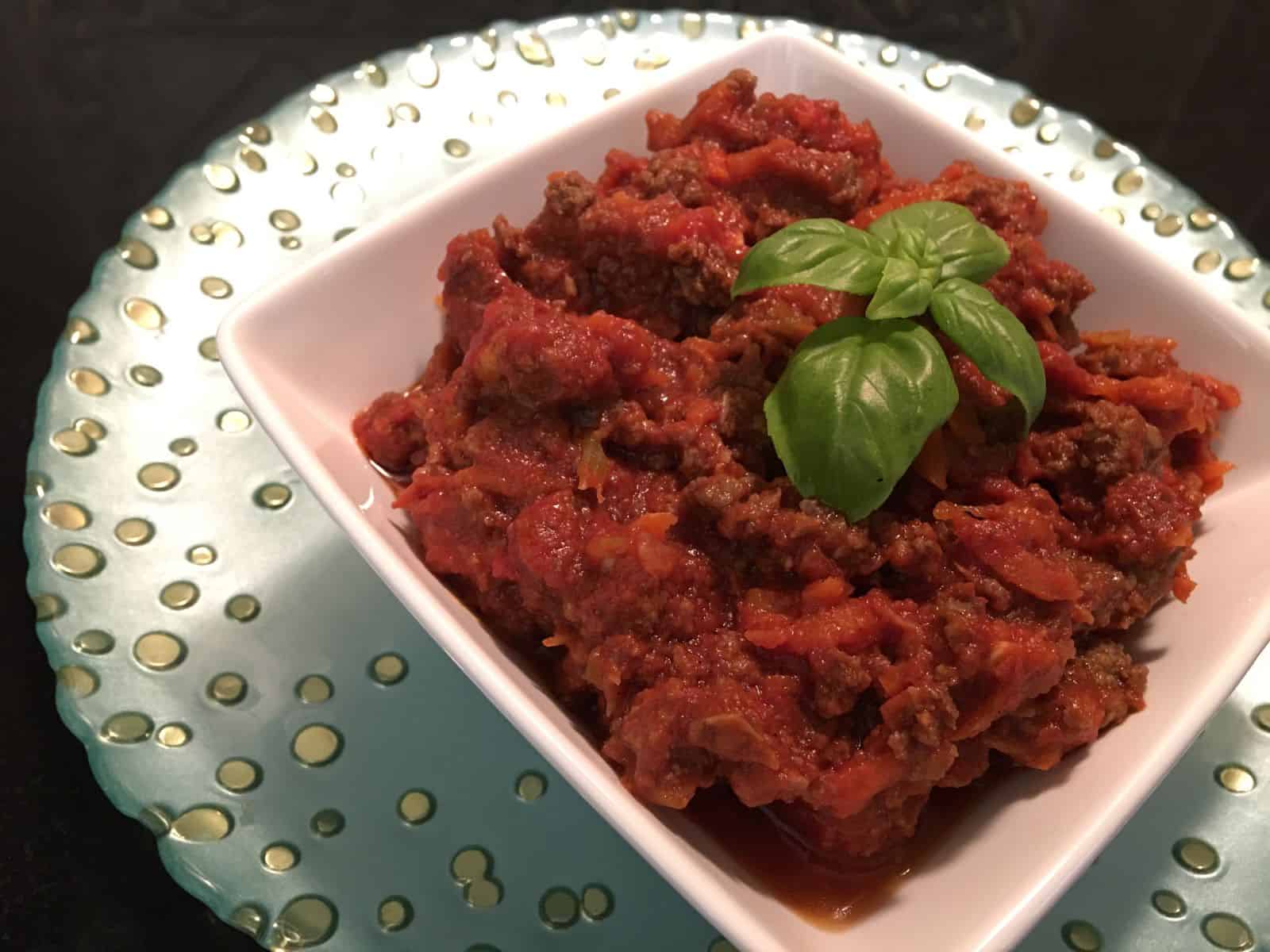
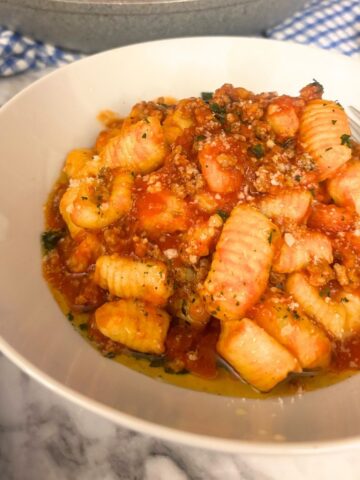
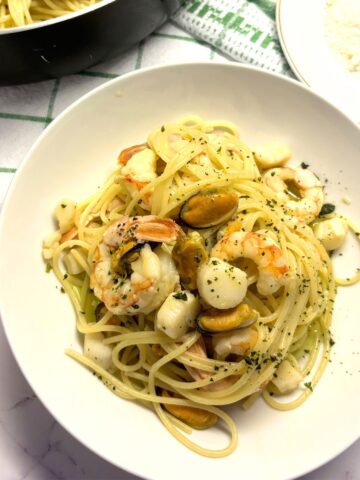
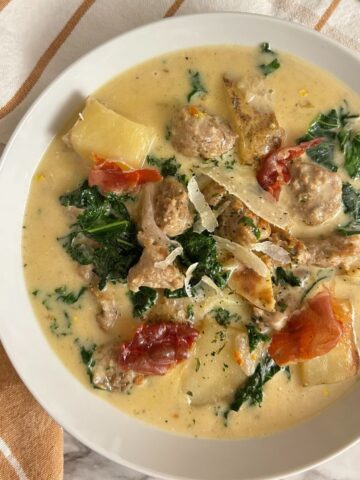
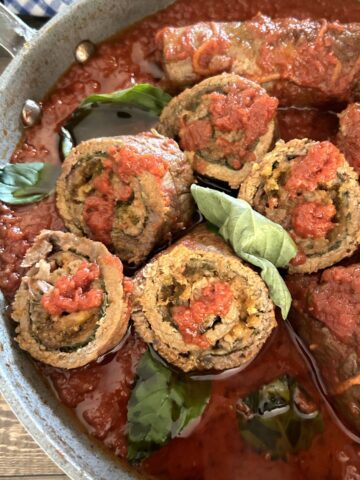
Comments
No Comments